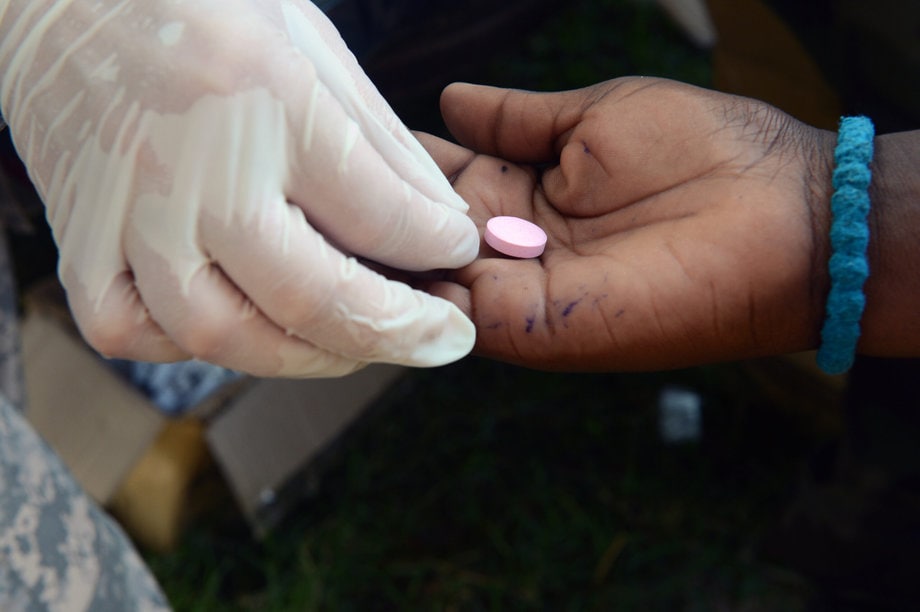What Is The Role Of Antihelmintic Drugs In Deworming?

Helminth infections, caused by parasitic worms, affect a substantial portion of the global population, particularly in low-income and developing countries. These infections can lead to serious health consequences, including malnutrition, anemia, and impaired cognitive development.
Antihelmintic drugs play a crucial role in deworming programs aimed at controlling and preventing helminth infections. This article aims to explore the role of antihelmintic drugs in deworming, including their mechanism of action, different types available, administration and dosage guidelines, potential side effects, and precautions.
Additionally, the importance of regular deworming, challenges faced in implementing deworming programs, and emerging trends in this field will be discussed. The article will also highlight collaborative efforts and global initiatives that aim to improve access to antihelmintic drugs and enhance the effectiveness of deworming programs.
Understanding the role of antihelmintic drugs in deworming is essential for policymakers, healthcare professionals, and researchers working towards controlling helminth infections and improving public health.
Key Takeaways
- Antihelmintic drugs are used to treat parasitic infections by killing or expelling parasitic worms from the body.
- These drugs target specific parasites and disrupt their life cycle.
- Regular deworming with antihelmintic drugs is important to prevent negative consequences of parasitic infections, improve overall health, and reduce symptoms and complications.
- Collaboration among organizations and community engagement are crucial for effective deworming campaigns, as they foster innovation, increase access to treatment, promote knowledge sharing, and facilitate impact assessment and program adjustments.
Understanding Helminth Infections
Helminth infections, commonly known as worm infections, pose a significant public health concern, and understanding their mechanisms of infection is crucial for developing effective control strategies.
Helminths are parasitic worms that infect humans and animals, causing a range of diseases. They are prevalent in areas with poor sanitation and hygiene practices, affecting over a billion people worldwide.
Helminth epidemiology involves studying the distribution, prevalence, and transmission dynamics of these infections. These infections have a profound impact on public health, leading to a substantial burden of disease, especially in low-income countries.
Helminth infections can cause malnutrition, anemia, impaired physical and cognitive development, and reduced productivity. In addition, they can exacerbate other diseases such as malaria and HIV/AIDS.
Therefore, antihelmintic drugs play a crucial role in deworming programs by effectively treating and preventing helminth infections, reducing their impact on public health.
How Antihelmintic Drugs Work
Parasitic worms, commonly found in the gastrointestinal tract of humans and animals, can be effectively targeted by a group of medications that work by disrupting the normal functioning of these organisms. Antihelmintic drugs play a crucial role in deworming programs by specifically targeting helminth infections. These drugs exert their effects through various mechanisms, including paralysis of the worms’ muscles, inhibition of their energy production, and interference with their essential metabolic processes. By disrupting the worms’ normal functioning, antihelmintic drugs effectively kill or expel the parasites from the host’s body. The effectiveness of antihelmintic drugs varies depending on the specific drug and the type of helminth infection being treated. Some drugs may only target certain types of worms, while others have a broader spectrum of activity. Overall, antihelmintic drugs are essential tools in combating helminth infections and improving the health of affected individuals.
| Antihelmintic Drug Mechanism | Effectiveness |
|---|---|
| Paralysis of worm muscles | High |
| Inhibition of energy production | Moderate |
| Interference with metabolic processes | Variable |
Types of Antihelmintic Drugs
This paragraph will discuss the types of antihelmintic drugs used in deworming.
Broad-spectrum dewormers are one type of antihelmintic drug that are effective against a wide range of parasitic worms. These drugs are commonly used in deworming programs to target multiple types of worms and provide comprehensive treatment.
In addition, there are specific dewormers available for different types of worms, allowing for targeted treatment based on the specific parasite involved.
Broad-spectrum dewormers and their uses
Broad-spectrum dewormers are efficacious medications that combat various types of parasitic infestations, presenting an arsenal of weapons against the diverse array of helminths that may afflict their host. These medications possess a wide range of action, targeting multiple types of worms simultaneously. They can effectively eliminate common intestinal worms such as roundworms, hookworms, whipworms, and tapeworms. Additionally, broad-spectrum dewormers have proven efficacy against other parasites like lungworms and liver flukes.
In terms of their mechanism of action, broad-spectrum dewormers work by interfering with the normal function of the helminths’ nervous system, muscle function, or energy metabolism. This leads to paralysis, expulsion, or death of the worms, thereby relieving the host from the detrimental effects of infestation.
Some examples of broad-spectrum dewormers include fenbendazole, pyrantel pamoate, and praziquantel. These medications are widely used in both human and veterinary medicine due to their broad efficacy and safety profile. However, it is important to note that specific dewormers may vary in their spectrum of activity and effectiveness against different types of worms. Therefore, it is crucial to select the appropriate dewormer based on the specific parasitic infestation being targeted.
Specific dewormers for different types of worms
A variety of specific dewormers are available to target different types of worms and effectively eliminate their infestations. These specific dewormers are designed to target and kill specific types of parasites, such as roundworms, tapeworms, hookworms, whipworms, and flukes. Each type of worm requires a different treatment approach, as they have different life cycles and mechanisms of infection. Treatment guidelines recommend using dewormers that have been proven to be effective against the specific type of worm present. For example, albendazole and mebendazole are commonly used to treat roundworm infections, while praziquantel is highly effective against tapeworms. By using specific dewormers according to the recommended guidelines, it is possible to effectively eliminate worm infestations and improve the health and well-being of both humans and animals.
| Worm Type | Dewormer |
|---|---|
| Roundworms | Albendazole, Mebendazole |
| Tapeworms | Praziquantel |
| Hookworms | Albendazole, Mebendazole |
| Whipworms | Mebendazole |
| Flukes | Praziquantel |
Administration and Dosage
The administration and dosage of antihelmintic drugs is an essential aspect of deworming protocols, as it determines the effectiveness of the treatment and the potential for adverse effects.
To ensure the proper administration of antihelmintic drugs, the following techniques are commonly used:
- Oral administration: This is the most common method of administering antihelmintic drugs. The medication is usually given in the form of tablets or liquids and is swallowed by the patient.
- Topical administration: In some cases, antihelmintic drugs can be applied topically, typically in the form of a cream or lotion. This method is often used for external parasites such as lice or scabies.
- Injectable administration: Certain antihelmintic drugs can be administered via injections. This method is commonly used in veterinary medicine or in cases where oral or topical administration is not feasible.
It is important to note that while antihelmintic drugs are the primary treatment for worm infections, there are alternative treatments available, such as herbal remedies or natural supplements. However, their efficacy and safety may vary, and it is recommended to consult a healthcare professional before considering these alternatives.
Potential Side Effects and Precautions
This paragraph discusses common side effects of antihelmintic drugs, safety precautions, and considerations for specific populations.
Antihelmintic drugs, like any other medications, can elicit various side effects. These side effects may include nausea, vomiting, abdominal pain, and dizziness. It is important for healthcare providers to be aware of these potential adverse effects and to educate patients on their occurrence and management.
Additionally, special precautions need to be taken when administering antihelmintic drugs to certain populations, such as pregnant women, children, and individuals with underlying medical conditions, to ensure their safety and efficacy.
Common side effects of antihelmintic drugs
Common side effects of antihelmintic drugs include gastrointestinal disturbances and allergic reactions.
Gastrointestinal disturbances are commonly reported, such as abdominal pain, nausea, vomiting, and diarrhea. These symptoms are usually mild and transient, resolving on their own without any specific treatment. In some cases, however, they can be more severe and require medical intervention.
Allergic reactions are another potential side effect, although they are relatively rare. Symptoms of an allergic reaction may include rash, itching, swelling, and difficulty breathing. If any of these symptoms occur, it is important to seek immediate medical attention.
When considering the use of antihelmintic drugs, precautions should be taken. It is essential to inform healthcare providers about any known allergies, as well as any existing medical conditions or medications being taken. Pregnant or breastfeeding women should consult with their healthcare provider before using these drugs, as their safety in these populations has not been well-established. Additionally, it is important to follow the prescribed dosage and duration of treatment to ensure the effectiveness of the drug and minimize the risk of side effects.
Safety precautions and considerations for specific populations
Safety precautions and considerations for specific populations include informing healthcare providers about any known allergies, existing medical conditions, or medications being taken, as well as consulting with a healthcare provider before using antihelmintic drugs during pregnancy or while breastfeeding, as their safety in these populations has not been well-established.
Pregnant women should exercise caution when considering antihelmintic drugs, as some medications may pose risks to the fetus. Healthcare providers can provide guidance on the potential benefits and risks of treatment during pregnancy.
Pediatric dosing is another important consideration, as children may require different dosages compared to adults. It is essential to consult with a healthcare provider to determine the appropriate dosage for children based on their age, weight, and specific condition.
Adhering to these safety precautions and considerations can help ensure the safe and effective use of antihelmintic drugs in specific populations.
Importance of Regular Deworming
Regular deworming is crucial in order to maintain the health and well-being of individuals, as it helps to prevent the negative consequences associated with parasitic infections. Regular deworming benefits individuals by reducing the burden of parasitic infections and improving their overall health.
Antihelmintic drugs play a key role in deworming as they are effective in killing or expelling parasitic worms from the body. These drugs target the specific parasites and disrupt their life cycle, preventing further infection and transmission.
The impact of deworming on overall health is significant, as it not only reduces the symptoms and complications caused by parasitic infections but also enhances nutritional status, cognitive development, and school attendance in children.
Moreover, regular deworming contributes to the overall improvement of public health by reducing the prevalence of parasitic infections in communities.
Therefore, it is essential to prioritize regular deworming as part of public health interventions to ensure the well-being of individuals and communities.
Challenges and Emerging Trends in Deworming
Challenges in deworming programs include inadequate access to healthcare facilities, limited resources for mass treatment campaigns, and low community awareness about the importance of deworming. These challenges in implementation hinder the efforts to control and eliminate helminth infections. The impact of these challenges on public health is significant.
- Inadequate access to healthcare facilities: Many communities, especially in rural areas, lack proper healthcare facilities where deworming programs can be implemented effectively. This limits the reach and coverage of deworming initiatives.
- Limited resources for mass treatment campaigns: Deworming programs require sufficient resources to conduct mass treatment campaigns. However, limited funding and logistical constraints often hamper the scale and effectiveness of these campaigns.
- Low community awareness: Lack of awareness about the importance of deworming and the consequences of helminth infections can reduce community participation in deworming programs. This results in lower treatment coverage and the persistence of helminth infections.
- Challenges in monitoring and evaluation: Measuring the impact of deworming programs on public health is crucial. However, challenges in monitoring and evaluation, such as insufficient data and limited surveillance systems, make it difficult to assess the effectiveness of deworming initiatives.
Addressing these challenges is essential to improve the implementation and impact of deworming programs, ultimately leading to better public health outcomes.
Collaborative Efforts and Global Initiatives
This paragraph focuses on the collaborative efforts and global initiatives in deworming campaigns.
Various organizations and programs have been actively working towards deworming initiatives worldwide.
These initiatives aim to combat the prevalence of parasitic infections by distributing antihelminthic drugs and implementing effective deworming strategies.
Additionally, community education and awareness play a crucial role in these campaigns, as they help in promoting understanding and compliance with deworming practices among the population.
Organizations and programs working towards deworming initiatives
Numerous organizations and programs are actively engaged in deworming initiatives, working towards reducing the burden of parasitic infections worldwide. Collaboration among these organizations is crucial to maximize the impact of their efforts. By pooling resources, sharing expertise, and coordinating activities, these organizations can reach a larger population and implement more effective deworming campaigns.
Additionally, collaboration allows for the pooling of data and resources for impact measurement, which is essential in evaluating the success of deworming programs. This enables organizations to identify areas for improvement and make informed decisions regarding the allocation of resources.
The collective efforts of these organizations and programs have the potential to significantly reduce the prevalence of parasitic infections, improving the health and well-being of millions of individuals around the world.
- Collaboration fosters innovation and promotes the development of new and improved deworming strategies.
- Joint efforts lead to increased access to antihelmintic drugs for at-risk populations, ensuring that no one is left behind.
- Collaborative initiatives provide a platform for knowledge sharing and capacity building, enhancing the effectiveness of deworming programs.
- By working together, organizations can advocate for policy changes and mobilize resources to support sustainable deworming initiatives globally.
Importance of community education and awareness in deworming campaigns
Community education and awareness play a vital role in fostering a culture of prevention and empowering individuals to take proactive measures against parasitic infections, as they become informed ambassadors spreading knowledge and inspiring healthier practices.
In deworming campaigns, community engagement is crucial for the success of initiatives. By educating communities about the importance of deworming and the potential risks associated with parasitic infections, individuals are more likely to actively participate in deworming programs and adhere to treatment regimens.
Additionally, community education allows for the dissemination of accurate information about the transmission, symptoms, and prevention of parasitic infections. This knowledge empowers individuals to recognize the signs of infection and seek appropriate treatment promptly.
Furthermore, community engagement facilitates impact assessment, enabling program organizers to evaluate the effectiveness of deworming campaigns and make necessary adjustments to improve outcomes.
By involving the community, deworming initiatives can achieve greater reach and sustainability, ultimately leading to a reduction in the burden of parasitic infections.
Frequently Asked Questions
Are antihelmintic drugs effective against all types of helminth infections?
Antihelmintic drugs are not universally effective against all types of helminth infections due to the emergence of antihelmintic drug resistance. The efficacy of these drugs in children varies depending on the specific helminth species and their susceptibility to the drugs.
Can antihelmintic drugs be administered to pregnant or breastfeeding individuals?
When considering the safety of antihelmintic drugs, it is important to evaluate their use in pregnant and breastfeeding individuals. These drugs may have adverse effects on infants, and caution should be exercised when administering them during these periods.
What are the potential long-term side effects of antihelmintic drugs?
The potential risks of antihelmintic drugs include adverse reactions such as gastrointestinal symptoms, allergic reactions, and neurological effects. Long-term side effects are rare, but may include liver damage or drug resistance development.
Are there any alternative treatments or preventive measures for deworming?
Alternative treatments and natural remedies for deworming include herbal supplements, probiotics, and dietary changes. These options aim to cleanse the digestive system and eliminate parasites, but their efficacy and safety may vary.
How often should deworming be conducted to maintain optimal health?
Regular deworming is important for maintaining optimal health. It offers numerous benefits for overall well-being by reducing the burden of parasitic worms in the body, preventing potential complications, and promoting a healthy immune system.








